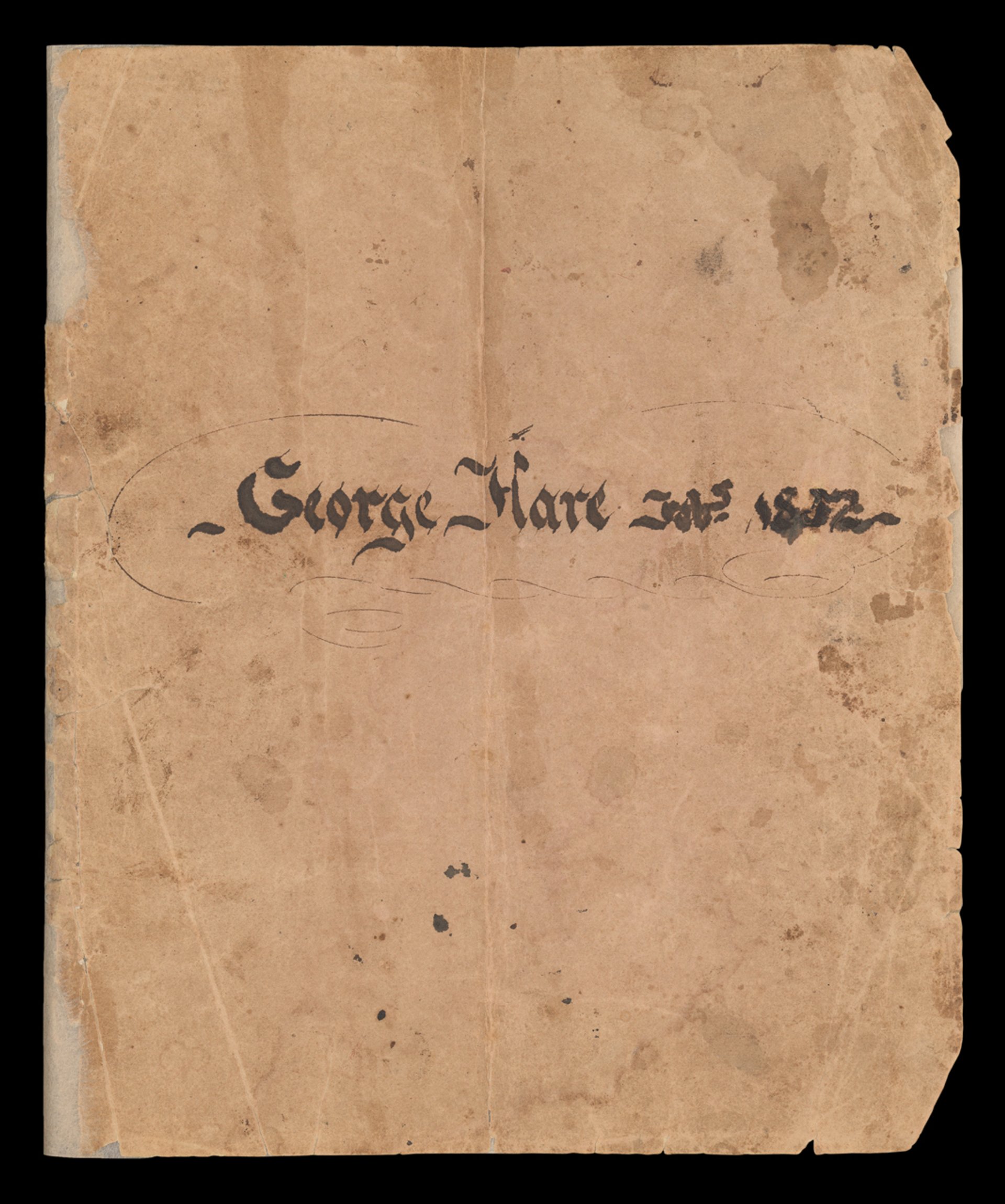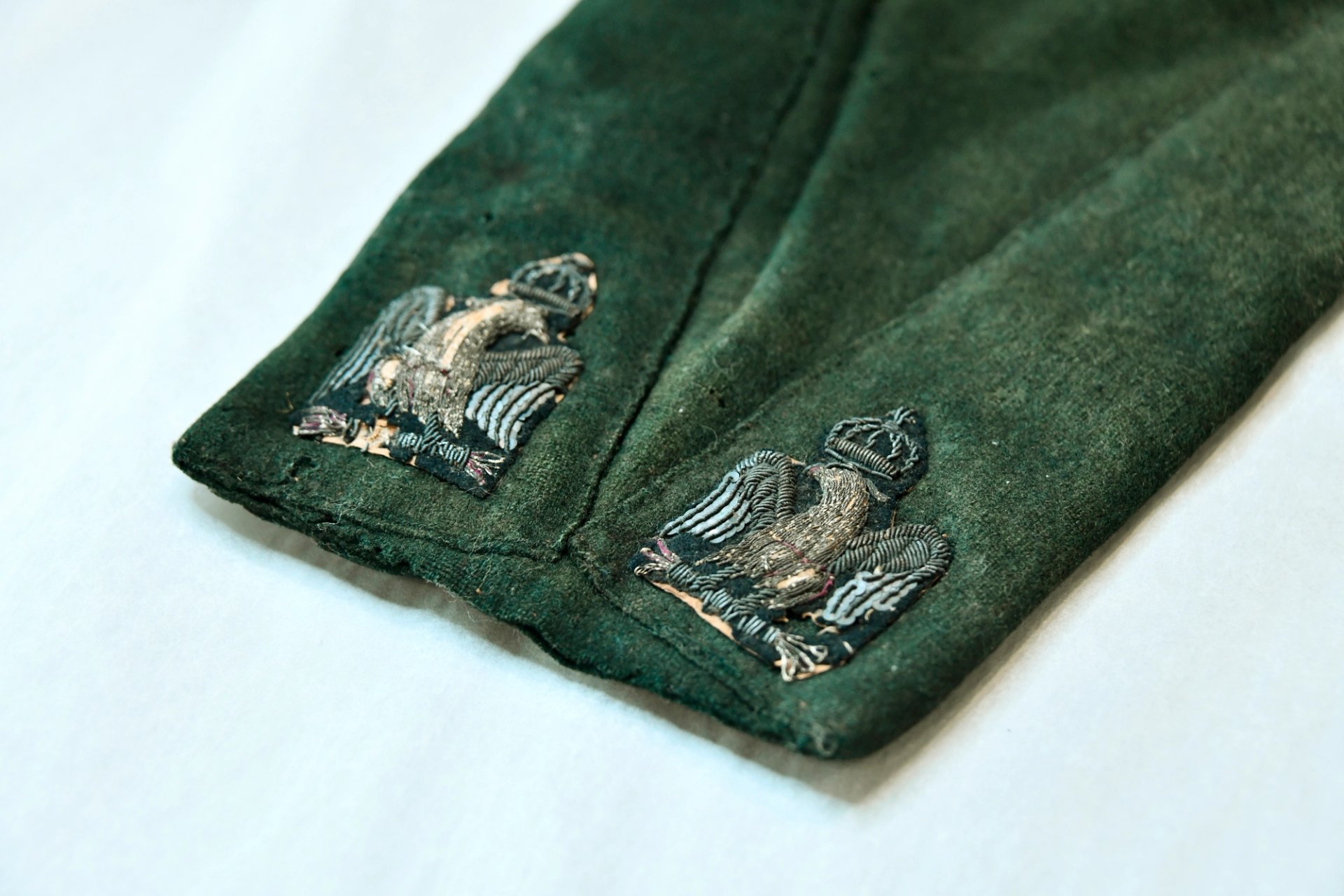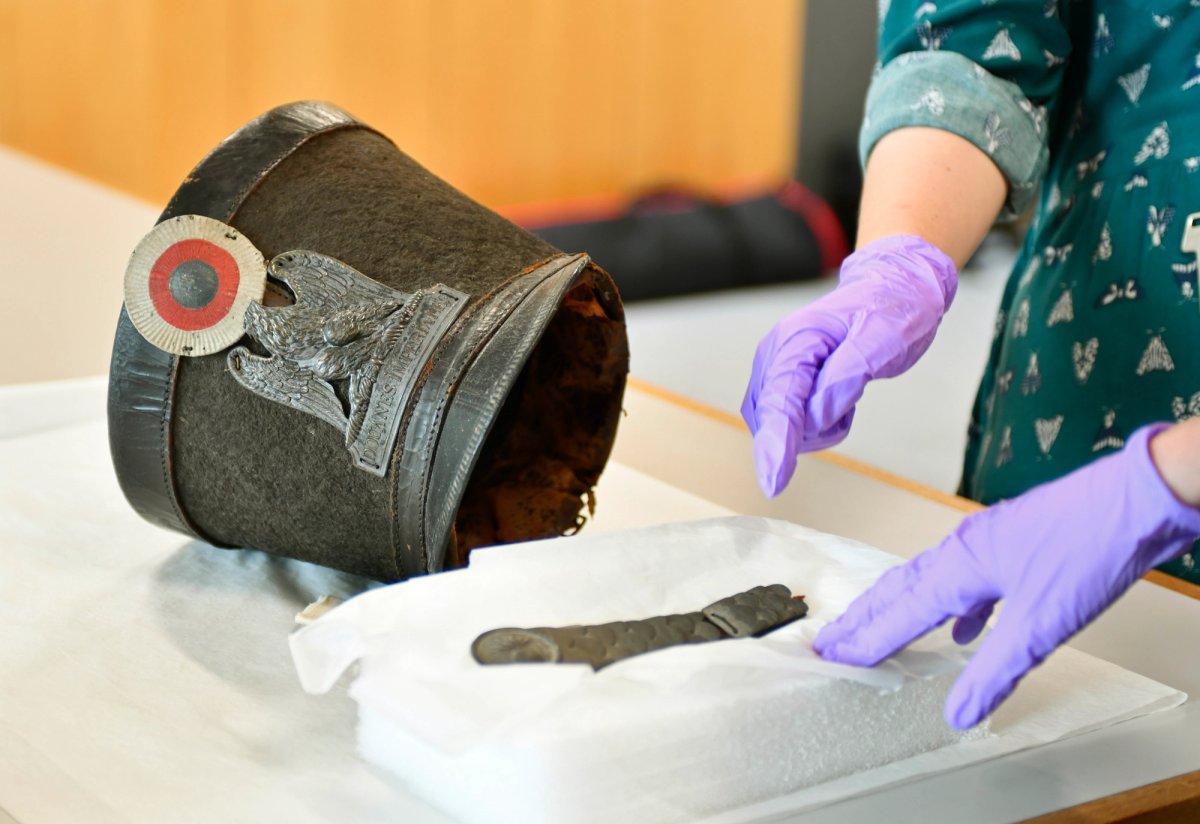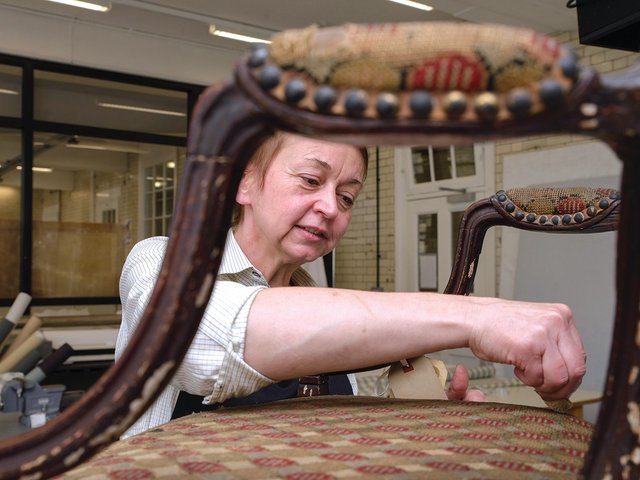One afternoon in August 1809, a young man entered into his mother’s house in Lincolnshire, having walked the 20 miles from the port at Grimsby. Charles Hare was a few weeks short of his 20th birthday, and his mother hadn’t seen him in six years.
At just 14 he had been working as a Midshipman in the Royal Navy, when he was captured by the French during the Napoleonic wars. He had an extraordinary tale to tell, and he carried the proof with him: the elaborate uniform and tall helmet of a French customs officer, the disguise in which he had walked out of a prison fortress.
The evidence for what might otherwise have been considered a particularly baroque sailor’s yarn has been kept carefully by his descendants for more than two centuries, and goes on display for the first time today at the National Maritime Museum in Greenwich. The objects go on show in advance of Trafalgar Day, the annual commemoration of Hare’s navy’s victory over the French in 1805, which took place while he was still languishing in prison.
The museum has recently acquired and carefully conserved the uniform, along with Hare’s handwritten account of his adventures—which he knew could have cost not just his return to prison, but his life. “If taken in a military habit, bearing arms or false papers, instant death awaits me by the decrees of Bonaparte, the violation of which I fully knew,” Hare wrote.

While accounts exist of escape attempts disguised as farm workers or laundry women, Hare’s appears to be a unique case
National Maritime Museum
Katherine Gazzard, curator of art at the museum, says the dark green uniform of the French Imperial Customs Service was unquestionably genuine, and itself a very rare survival. It has silver lace at the neck, brass eagle buttons, silver gilt embroidered eagles on the cuffs, and the words Douanes Imperiales repeated on belt buckle and hat.
“How Charles actually got hold of the uniform is one of the unanswered questions—he rather sketches over it in his account,” Gazzard explains. “But the French customs officers were poorly paid and notoriously corrupt and amenable to bribes, so that may well be the explanation rather than a remarkably kind hearted officer.”
Who was Charles Hare?
Hare, the son of a naval officer, was born in Lincolnshire in 1789, and joined the Royal Navy as an 11-year-old child. In 1803 his ship, the Minerve, was captured by the French off Cherbourg, and he was imprisoned, initially on parole in Verdun and then as the regulations tightened in 1806, in the prison fortress of Sarre Louis.
On August 12 1809 he walked out the fortress gates in his fancy uniform and coal scuttle sized helmet, took a coach to the Rhine at Mainz, and by a series of boats got to Rotterdam. On August 25 he presented himself on board the Royal Oak, a British warship blockading the Dutch coast, which brought him safely back to Great Yarmouth and then Grimsby.
Gazzard says that while there were accounts of escape attempts disguised as farm workers or laundry women, Hare’s appears to be a unique case. He would have had some money from a small allowance made to prisoners and possibly loans from fellow inmates. She assumes he was given new clothes on the ship—“a French customs officer probably wouldn’t have been so warmly welcomed back in England”—but thinks it remarkable that he managed to keep the uniform with him.

Conservation work has since shown that the uniform was almost worn out— patched inside with unmatched scraps of fabric, and one sleeve left without any lining
National Maritime Museum
Conservation work has since shown that, was the uniform sold by a corrupt officer, he may well have thought he got a good bargain—it was almost worn out, patched inside with unmatched scraps of fabric, and one sleeve left without any lining.
Gazzard thinks Hare’s escape was possibly prompted by his imminent 20th birthday, the youngest age at which he could apply for a lieutenant’s status. He duly passed his exams and was promoted, but the final defeat of Napoleon at Waterloo in 1815 was a disaster for him and thousands of his fellow officers, made redundant as the navy was downsized.
Yet, Gazzard says, Hare continued to apply to the navy and achieved a distinguished record, but never got another ship. Instead he became a merchant seaman, married a Canadian woman and settled in Canada, where his descendants carefully kept the relics of his great adventure for generations. That is, until they contacted the Maritime Museum last year, feeling it deserved a wider audience.
The historian Dan Snow, who is including the story in his History Hit podcast, called the uniform “an absolutely amazing discovery revealing one of the most exciting unknown stories from the Napoleonic Wars”.
- The National Maritime Museum at Greenwich, London, is open daily from 10am-5pm




